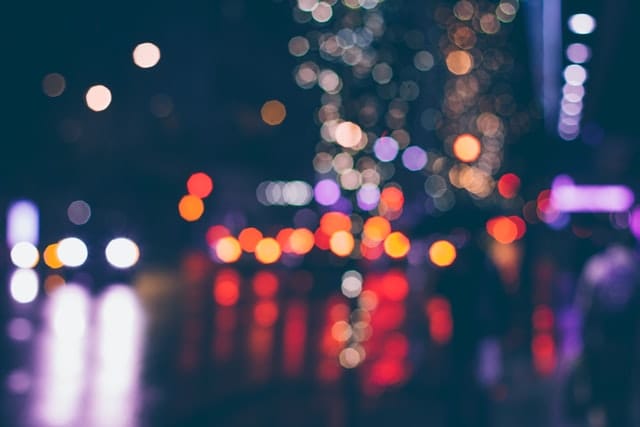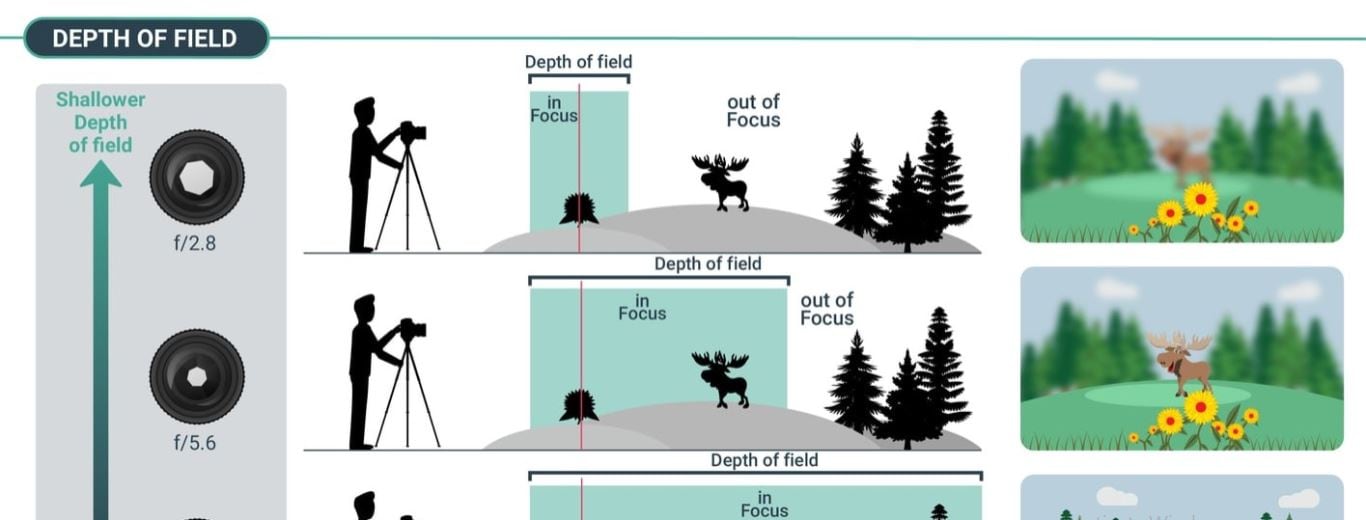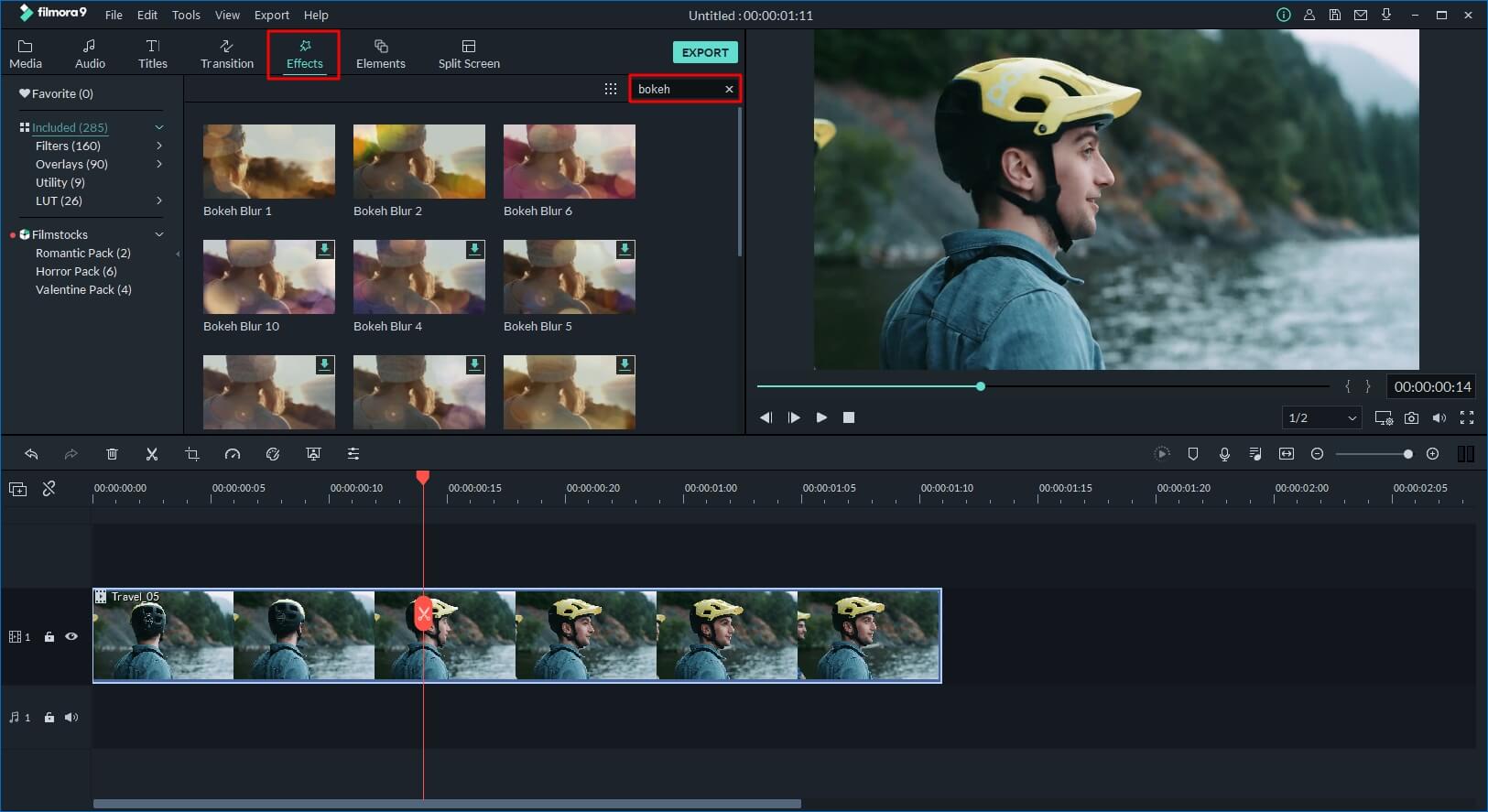Versatile Video Editor - Wondershare Filmora
An easy yet powerful editor
Numerous effects to choose from
Detailed tutorials provided by the official channel
There’s a good chance that you’ve encountered the ‘bokeh’ term before if you own frequent photography websites or have photographer friends, or you're involved in some video editing tasks. Camera enthusiasts refer to this optical effect regularly, but what is it exactly?
The term 'bokeh' comes from a Japanese word for "blur." As a result, bokeh effects have become a photography jargon used to define how a lens renders a background out of focus. This guide will focus solely on using bokeh effects and admiring various bokeh backgrounds worth using in 2021.
So, let’s explore them without any further ado!
Part 1: What is Bokeh Effect in Photography?
The term bokeh is generally out of focus "light orbs" you see on videos or images. However, a more formal definition of Bokeh would be: how out of focus light is rendered.

The exact meaning of bokeh:
As already mentioned, bokeh is derived from the Japanese word boke (ボケ), which also refers to "blur" or "haze," or boke-aji, the "blur quality." It is pronounced as BOH-K? or BOH-kay.
Part 2: How to Create Stylish Bokeh Effects in Your Photos?
Photographers who wish to achieve the bokeh effect generally use a shallow focus to beautify photos with a different depth of field, conclusively creating a blurred background. The quality of the blur and its impact on the image will identify whether the bokeh effect is bad or good.
You need to understand a clear distinction between the foreground subject in an image and the background to make a fantastic effect of bokeh. An example of pleasing bokeh might be a very well-defined subject with a blurred background represented by blurred, soft circles of light. An example of lousy bokeh might be an image in which the foreground subject and the background are slightly out of focus and blurry.
1. Select the right camera to shoot bokeh
The lens is the most critical aspect of shooting bokeh.
Every lens contains a certain amount of blades on its diaphragm. They used to open and close when you take a photo, creating the aperture. That number of blades determines the bokeh’s final shape.
A lens with fewer blades makes an octagonal bokeh. And, a lens with more blades produces a smoother, more rounded bokeh.
You can also purchase or create different bokeh shapes by cutting a body out of dark paper and covering the lens with it.
You’re required to count the number of blades when you’re shopping for a lens. Also, check if “diaphragm blades” are a listed feature. Look for lenses with more than eight blades for rounder shapes.
A longer focal length lens will also make it easier to shoot good bokeh, as a longer focal length minimizes the depth of field.
2. Here’s How to Achieve Depth of Field for Bokeh

Source: capturetheatlas.com
Get as close as possible to the subject of your photo.
The shallower your depth of field, the nearer you are to the subject, and the more blurry your background will be.
You also want to make sure the subject is even further than usual from the background while shooting bokeh effects: think hundreds of feet, not five or ten.
3. Choose the best aperture setting for Bokeh
To shoot pleasing Bokeh more efficiently, you need a more significant and faster aperture (not to be confused with shutter speed).
You are making a very shallow depth of field while using a larger aperture. That allows your camera to focus on the photo while the background is still blurred.
When shooting Bokeh, set your lens to the lowest aperture, called "maximum aperture."
Set your camera to aperture priority mode, and put the "F" value to the lowest number possible.
You can do this by rotating the front dial counterclockwise on a Nikon DSLR
Turn the camera to "M" for manual on Canon, and hit "Q" for quick mode, and then transform the dial to the left until you can't reach the lower value of "F."
4. Choose the right method to shoot blurred lights Bokeh
Bokeh is made by a tiny bit of light blurring. If your image doesn't have any small light sources—such as sunlight filtering through trees, street lights, or even the Christmas lights in the distance—you can’t instill bokeh effects video.
For instance, you can create a small light source by setting up candles or Christmas lights in an indoor space. The only concern is to make a distinction between dark and light areas in your image’s background.
5. This is How to Place a Subject for Bokeh Photography
Please choose a subject that is a decent distance from the background, or move it as far as possible to achieve background blur.
For instance, there are trees in the background while shooting a portrait, don’t put the person close-up against the tree for bokeh. Instead, place them at an actual distance from the trees so that they can appear as a blurred, soft bokeh background.
Part 3: How to Add Bokeh Effects to Videos in Filmora?
If you need a video bokeh background after shooting, you can use some video editing software to add them or the tilt-off effect in post-production directly. Here, we will discuss the steps of how to do that in Filmora.
Filmora is one of the popularly used video editing software among video editors. Its user-friendly interface enables green-hands to start video editing promptly. Besides, you can find many free filters, pre-programmed elements, and effects, so you can directly use them without looking for templates and presets somewhere else.
Wondershare Filmora
Get started easily with Filmora's powerful performance, intuitive interface, and countless effects!

Add Bokeh Filter to Video in Filmora
Within Filmora, you will find 20 plus bokeh effects in the filters and overlays section. You can easily look for them by typing bokeh in the Effects search bar.
Note: If you need more visual effects, go to the Filmstock effects store.

Double click the bokeh effect and preview the result. If you find it suitable for the video, drop it to the track right above it. And the bokeh overlay or filter will be automatically applied to the video.
All in all, it is the easiest way to beautify your images and videos with the inbuilt bokeh effects of Filmora.
Part 4: FAQs about Bokeh Effects
1 – Which lens is best for the bokeh effect?
The lens with fewer blades and more blades is best for creating bokeh effects while serving different purposes.
2 – What is a bad bokeh?
An example of bad Bokeh might be an image in which the foreground subject and the background are slightly out of focus and blurry.
3 – What causes Bad bokeh?
The process of how you set up the subject of an image to the foreground and background determines the bad bokeh.
Conclusion
While this may seem daunting initially, capturing bokeh effects is surprisingly easy once you get the hang of it. As with many techniques of Photography, experiment with your equipment and see what works best. Still, there are easiest methods as well to do the same thing.
Don't worry much about the technical concerns of this effect, as you can use a specific video editor like Wondershare Filmora to achieve the same effect with simplicity.



 100% Security Verified | No Subscription Required | No Malware
100% Security Verified | No Subscription Required | No Malware
